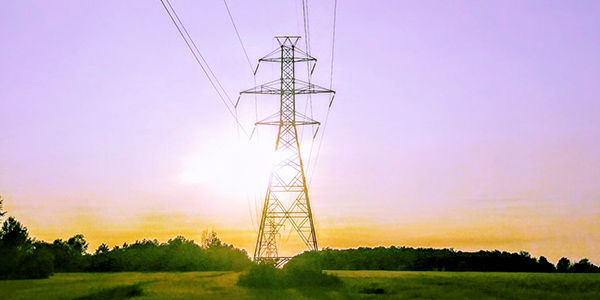MISO on Monday presented stakeholders a long-awaited set of transmission planning futures that it insists are final despite calls for an additional scenario that models an economic downturn stemming from the COVID-19 pandemic.
“Keep in mind we’re not trying to predict what will happen; we’re trying to predict bookends of what could happen,” MISO Planning Manager Tony Hunziker told stakeholders during a teleconference to discuss the three, 20-year future scenarios.
The RTO will begin relying on the three new planning futures starting with the 2021 cycle of the Transmission Expansion Plan (MTEP 21). The scenarios have undergone multiple alterations in response to stakeholder suggestions. (See MISO Outlines Electrifying Tx Planning Futures.)
Future I — formerly Announced Plans — assumes an 85% probability that corporations will realize their renewable growth and carbon-cutting goals and full certainty that states will fulfill their clean energy plans. It also includes a 40% reduction in carbon emissions from 2005 levels by 2040.
Future II — previously Accelerated Fleet Change — assumes MISO members will meet or exceed decarbonization plans while carbon emissions drop 60% from 2005 levels. Electric vehicle adoption stimulates demand, while residential and commercial electrification reaches 39% of its technical potential, representing a 30% energy growth footprint-wide by 2040.
Future III — Advanced Electrification — also assumes members fulfill their renewable plans and consumers adopt EVs. It foresees a sharp increase in demand from residential and commercial electrification, representing 50% energy growth. The RTO also experiences a minimum 50% renewable penetration level as carbon emissions dip 80% below 2005 levels.
MISO originally predicted a 60% energy growth in the electrification future but backed down on the estimate after pushback from stakeholders. The RTO plans to include more detailed time-of-use charging patterns for the 2022 MTEP cycle.
Calls for Fourth Future
Hunziker said stakeholders sought more data and justification for MISO’s electrification predictions. He also said some stakeholders asked whether the RTO would update economic assumptions based on the devastating impact of the coronavirus pandemic.
Hunziker said it’s simply “too early to tell” the pandemic’s long-term effects on the energy industry.
MISO Director of Economic and Policy Planning Jesse Moser said the RTO continues to believe it doesn’t need to develop a fourth future that models a major economic slowdown despite the pandemic.
“Our view today is that this appears to be a shorter-term impact,” Moser said. “We think we’re in a good place right now … We’ll come back and see what happens.”
Hunziker said any lasting effects on MISO load depend on how long shelter-in-place directives remain in place and whether the virus resurges in the fall. He also reminded stakeholders that it’s an election year and challengers to incumbent candidates have extensive energy policy plans.
Moser said the RTO will specifically review electrification assumptions next year. But by summer it will have spent “pretty close to a year” defining the futures and must lock down its assumptions.
“No future is going to be perfect. If we do our job, they will land somewhere in this range of scenarios,” Moser told stakeholders.
But some stakeholders disagree, maintaining that MISO should consider stagnant economic conditions and stationary load growth in the scenarios — or develop a fourth future dedicated entirely to the possibility.
Mississippi Public Service Commission’s David Carr said the RTO’s electrification and demand predictions are simply too high, especially considering the pandemic’s side effect of paralyzing economies.
“There is in fact significant uncertainty on near- and long-term energy demand,” Carr said during an April 15 Planning Advisory Committee teleconference. He added that resource retirements and additions will increasingly be thrown into upheaval. He reminded stakeholders that economists predict that the crisis is triggering the worst recession since the Great Depression.
Carr asked MISO to take an extra “three to six months” to reevaluate the futures and make sure they account for the possibility of a lower end of decarbonization and load growth.
But Sam Gomberg of the Union of Concerned Scientists pointed to the decade following 2008’s Great Recession “as a reminder that there are two sides of the coin to this uncertainty.” He said renewable generation expansion and technological advancements gained steam over the last economic downturn and recovery.
Some stakeholders countered that this slump is shaping up to eclipse all other downturns in magnitude. Others pointed out that projects approved in MTEP 21 won’t go into service until several years after 2021, safely outside of the current pandemic. Still others said it isn’t realistic to expect that the depressed load seen in the months with social distancing will reverberate 20 years into the future.
WEC Energy Group’s Chris Plante said the RTO is still in need of a fourth future that contains more conservative electrification estimates to serve as a foil for Future III.
Others said a fourth future could serve to temper load forecasts in a post-COVID-19 world.
But Xcel Energy’s Carolyn Wetterlin said Future I does represent the low end — and even dips lower — than what her company expects in terms of renewable buildout.
During MISO’s April 21 Informational Forum, CEO John Bear held firm that the RTO will not add a fourth future and reminded stakeholders that the futures are meant to bookend a range of future possibilities. In MISO, large economic transmission projects that show benefits under all three futures are selected for inclusion in annual transmission plans.
“These are not meant to be deterministic … or spot-on 20 years into the future,” Bear said. “It’s easy to lose sight of that.”
Bear said the RTO “simply doesn’t know” what, if any, long-term impacts the pandemic could introduce in the energy industry. He also reminded stakeholders that futures capture 20 years, not just the immediate future.
“We do plan on looking at the state of the world a year from now” to study any lasting load impacts in annual planning, Bear said.


